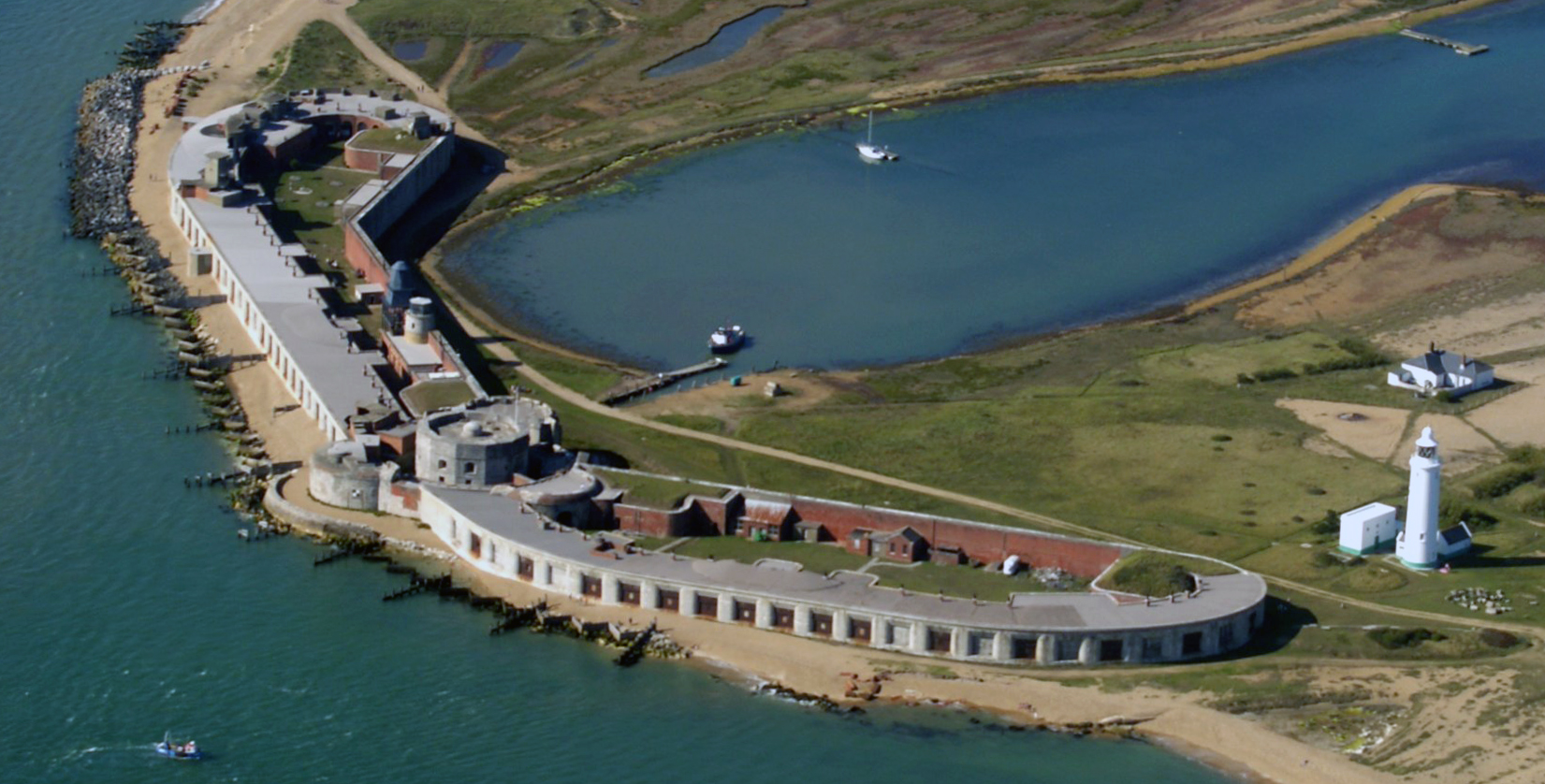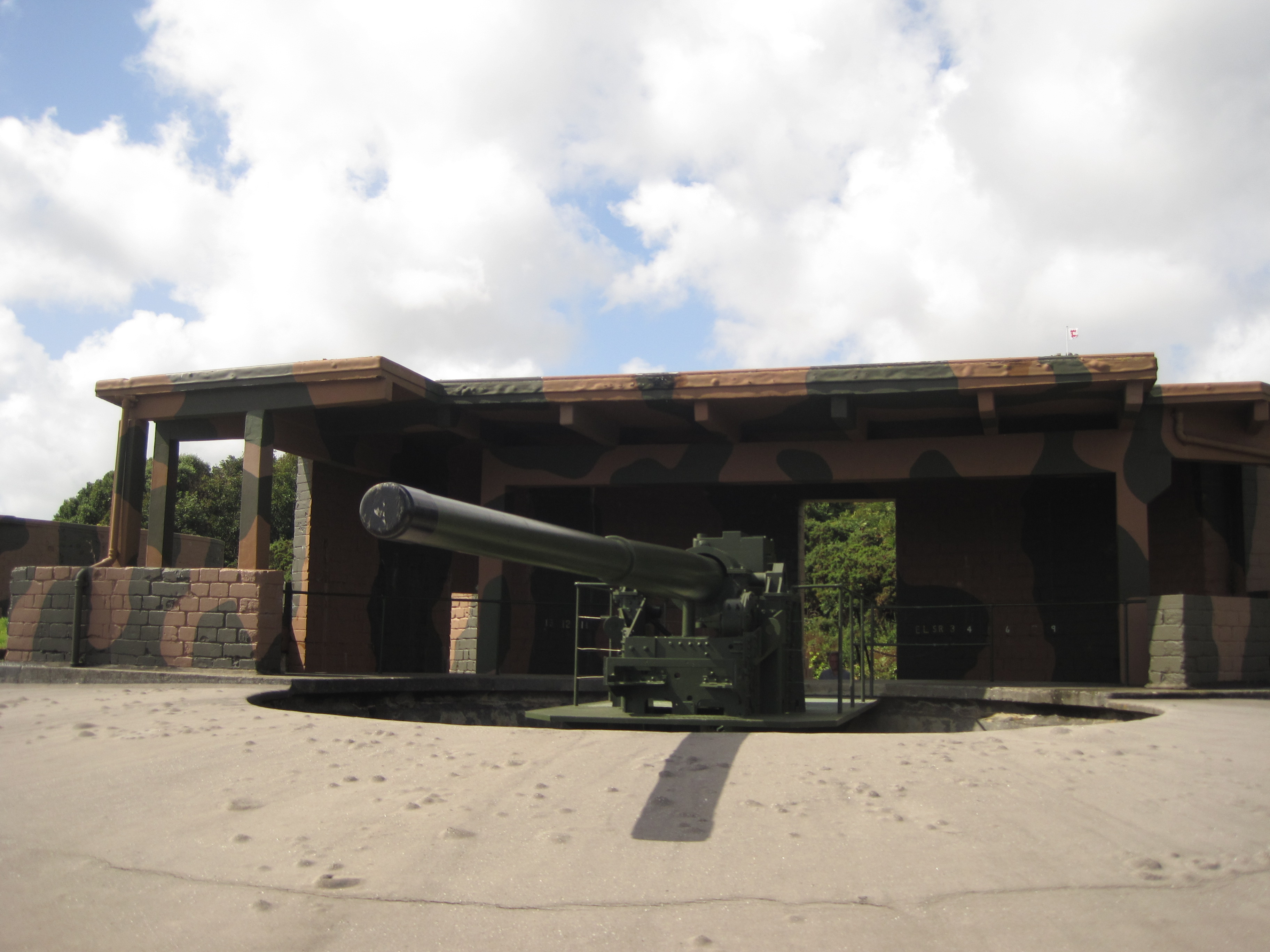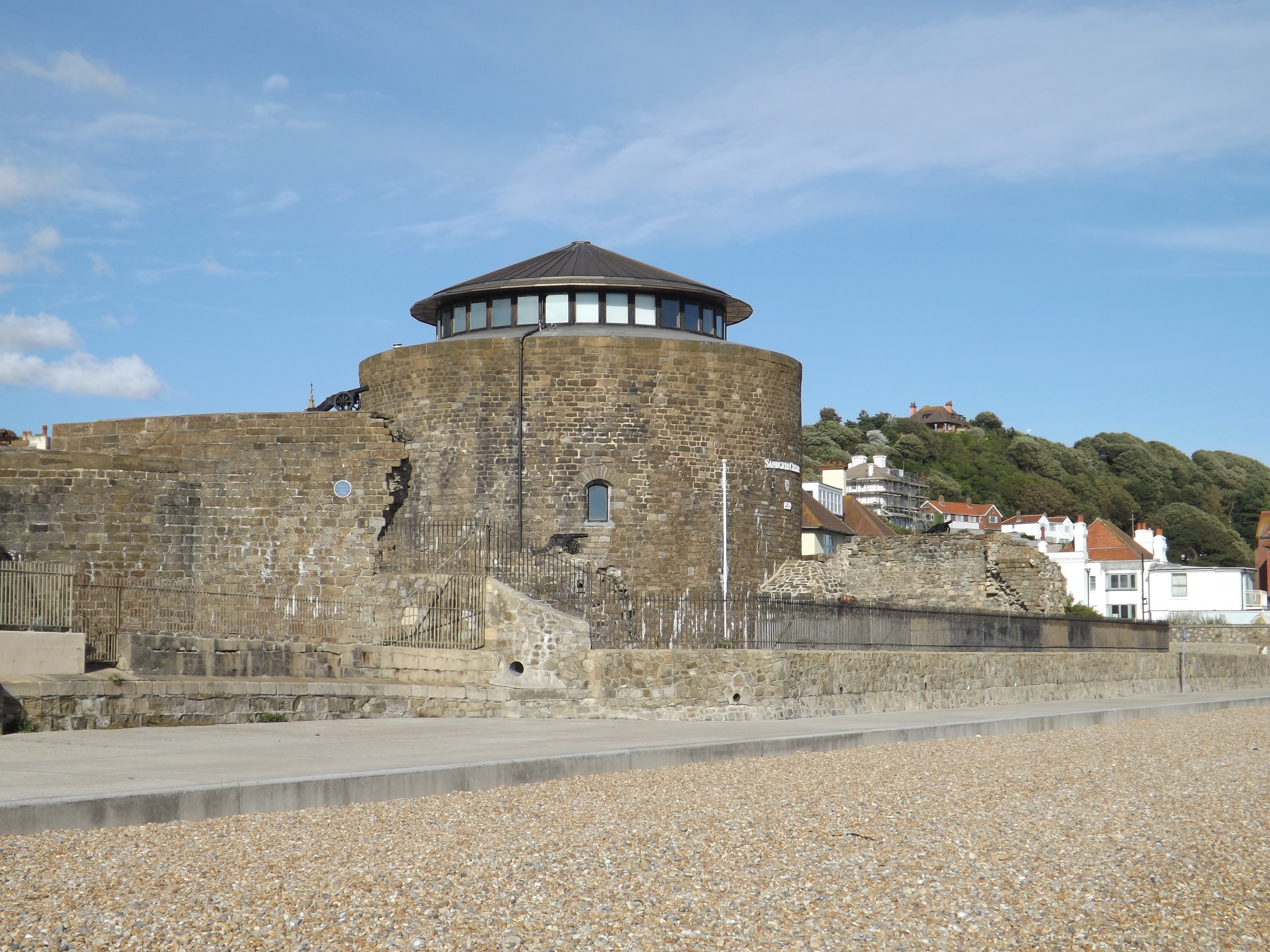Victorian era

From the mid-19th century onwards, changes in military technology repeatedly challenged the value and composition of Britain’s coastal defences. The introduction of shell guns and steam ships created a new risk that the French might successfully attack along the south coast, and fears grew of a conflict in the early 1850s. Southsea Castle and St Mawes were extended with new gun batteries, Pendennis was reequipped with heavier guns and Hurst was extensively redeveloped. There were discussions about rearming Calshot, but these were rejected, in part due to concerns about the suitability of the 16th-century walls in modern warfare. The Crimean War sparked a fresh invasion scare and in 1855 the south coast of England was refortified. New guns were installed at St Catherine’s and Yarmouth in 1855. The remains of the West Blockhouse were destroyed by a new fortification, the West Blockhouse Fort, designed to deal with the French threat.
Fresh worries about France, combined with the development of rifled cannon and iron-clad warships, led to the Royal Commission on the Defence of the United Kingdom being established in 1859, and expressing fears about the security of the south coast. In response, Sandgate was re-equipped with heavier guns in 1859, and extensive work was carried out on Southsea. Hurst was fitted with two huge batteries of heavy rifled breech-loading guns, protected by iron armour-plate, intended for use against fast-moving enemy warships. Tilbury Blockhouse was destroyed to make way for heavier guns at the fort after 1868. Portland was readopted by army as a garrison base in 1869 in response to fears of an invasion, but it was not rearmed.
A fresh wave of concerns about France followed in the 1880s, accompanied by the introduction of still more powerful naval artillery and fast warships and torpedo boats, resulting in a fresh wave of modernisation. An electronically-operated minefield was laid across Carrick Roads in 1885, jointly controlled from St Mawes and Pendennis. New, quick-firing guns were installed at Hurst to enable the castle to engage the newer vessels. Calshot was brought back into service as a coastal fort, with a new battery of quick-firing guns protecting a boom across the estuary. The original 16th-century parts of fortifications such as Southsea and Calshot were too small and unsuitable for modern weapons, however, and were instead used for mounting searchlights, range and direction finding; in some cases their fabric was left to slowly decline.
Some other sites were no longer considered viable at all. West Cowes was decommissioned in 1854 and became the club house of the Royal Yacht Squadron. Sandown Castle in Kent, suffering badly from coastal erosion, began to be demolished from 1863 onwards; Hull Citadel and its 16th-century fortifications were demolished in 1864 to make way for docks; Yarmouth was decommissioned in 1885, becoming a coastguard signalling station; and Sandgate, also suffering from coastal erosion, was sold off to the South Eastern Railway company in 1888.
1900–45

By the start of the 20th century, developments in guns and armour had made most of the Device Forts that remained in service too small to be useful. Modern weapons systems and their supporting logistics facilities such as munitions stores could not fit within the 16th-century designs. A 1905 review of the Falmouth defences concluded that the naval artillery at St Mawes had become superfluous, as the necessary guns could be mounted at combination of Pendennis and newer sites along the coast, and the castle was disarmed. A review in 1913 concluded that keeping naval artillery at Calshot was also unnecessary, and the site was turned into an experimental seaplane station instead.
Meanwhile, concerns had been growing about the unsympathetic treatment of historic military buildings by the War Office; for its part, the War Office was concerned that it might find itself financially supporting these properties from its own budget. Yarmouth Castle was passed to the Commissioners of Woods and Forests in 1901, with parts of it were leased to the neighbouring hotel. The War Office concluded that Walmer and Deal had no remaining military value and agreed to transfer the castles to the Office of Works in 1904, who opened both former fortifications to visitors. Portland Castle was placed onto what was known as the Schedule C list, which meant that the Army would continue to use and manage the historic property, but would receive advice on the suitability of repairs from the Office of Works.
With the outbreak of the First World War, naval operations were mainly focused along the south-east and southern coasts. The defences of Pendennis were reinforced, while Southsea, with the addition of anti-Zeppelin guns, formed part of the Fortress Portsmouth plan for defending the Solent. Calshot formed a base for anti-submarine warfare, and the remaining castles of the Downs were used to support the activities of the Dover Patrol. St Mawes and Portland were used as barracks, and Walmer became a weekend retreat for the Prime Minister, Asquith, exploiting its good communication links with the front line in France.
During the Second World War, Britain’s coastal defences depended on extensive barriers constructed along the shores, combined with large numbers of small defensive artillery positions supported by air cover. Several of the Device Forts were brought back into service in this way. Pendennis, St Catherine’s, St Mawes and Walmer were equipped with naval gun batteries, Calshot and Hurst were rearmed with naval guns and anti-aircraft defences, and Sandsfoot was used as an anti-aircraft battery. Southsea continued in service, and was involved in Operation Grasp, which seized the French fleet in 1940. Others were used as support facilities; Yarmouth was requisitioned for military use; Portland was used for accommodation, offices and as an ordnance store, and West Cowes used as a naval headquarters for part of the D-Day landings. Camber was used as an early warning and decoy site to distract raids from nearby Rye. Early in the war a German bomber destroyed much of the captain’s quarters at Deal, forcing William Birdwood to move to Hampton Court Palace. The Prime Minister, Winston Churchill, was appointed as the captain of Walmer Castle during the war, but declined to use it as a residence, noting that it was too expensive for him to maintain, and that it lay within the range of German artillery.
1946–21st century

After the war, coastal defences became increasingly irrelevant as nuclear weapons came to dominate the battlefield. The remaining Device Forts still in military use were initially garrisoned with reservist units and then closed as military establishments. St Catherine’s and Portland were decommissioned in the late 1940s, Hurst, Pendennis and Yarmouth in the 1950s, Southsea in 1960 and, after, the closure of its air base, Calshot followed in 1961.
Widespread restoration work was then carried out; at Calshot, Deal, Hurst, Pendennis, Portland, St Catherine’s and Southsea, the more modern additions to the fortifications were destroyed in an attempt to recreate the appearance of the castles at earlier periods of their history, ranging from the 16th to the 19th centuries. There was extensive research into the forts during this period, commencing in 1951 with a long-running research project commissioned by the Ministry of Works into the Device Forts, which in turn led to heightened academic interest in their histories during the 1980s.
A range of the fortifications were opened to the public in the post-war years. Deal, Hurst, Pendennis and Portland opened in the 1950s, and Southsea in 1967. Calshot followed in the 1980s, Camber after a long period of restoration work in 1994, and Sandsfoot reopened following repair work in 2012. Visitor numbers vary across the sites; Southsea Castle, for example, received over 90,000 visitors in 2011–12. Other forts were put to different uses: Netley was first used a nursing home, and then converted into private flats; Brownsea became a corporate hotel for the employees of the John Lewis Partnership; and Sandgate was restored in the 1970s to form a private home.
By the 21st century many of the Device Forts had been damaged by, or in some cases lost entirely, to coastal erosion; the problem had existed at some locations since the 16th century and still persists, for example at Hurst. East Cowes Castle and East Tilbury Fort have been entirely lost, while the East Blockhouse, Mersea and Sandsfoot have been badly damaged, a third of Sandgate and most of St Andrews have been washed away. Other sites were demolished, built upon or simply eroded over time; almost no trace remains of the bulwarks along the Downs, for example. The remaining sites are protected by UK conservation law, either as scheduled monuments or listed buildings.
Bibliography
Attribution
The text of this page was adapted from “Device Forts” on the English language website Wikipedia, as the version dated 30 July 2018, and accordingly this page is licensed under CC BY-SA 3.0. Principle editors have included Hchc2009, 157.203.42.132 and Nev1, and the contributions of all editors can be found on the history tab of the Wikipedia article.
Photographs on this page are drawn from the Wikimedia website, as of 22 July 2018, and attributed and licensed as follows: “Hurst Castle, near Milford on Sea, Hampshire, England-2Oct2010 trimmmed“, author Ian Stannard, released under CC BY-SA 2.0; “Gun at Half Moon Battery Pendennis Castle“, author Chris Holifield, released under CC BY-SA 2.0; “Sandgate Castle September 2013 ED04“, author Edgepedia, released under CC BY-SA 3.0.
